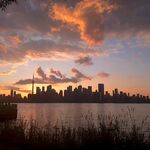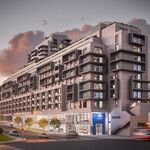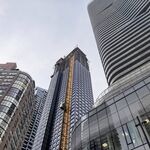Let's keep on topic!!
Does anyone know the basic costs of using existing rail ROWs for subways?
Remember the premise of this thread is what you would do with the $8.15 billion Metrolinx has for rapid transit for the city over the next 10 years.
Do you think that maybe everything should be cancelled to put the money into one line only? Maybe just a 30km Eglinton line or a DM to Pearson via a DRL using the Oshawa and Georgetown rail corridors?
Subways and Busways
Downtown Relief Subway (Phase 1): Pearson to St Lawrence Market via Eglinton West = $5.45 billion
Bloor-Danforth Subway extension: Kennedy to Scarborough Centre via Danforth-McCowan Rds (completion) = $1.5 billion
Scarborough Busway: Kennedy/Ellesmere to Highway 2/Militray Trail via Scarborough Centre, Progress Campus, Malvern TC/UTSC = $390 million
Finch Crosstown Busway (Phase 1): Highway 27 Stn to Bridletowne Mall via Finch Ave. West and Cherrywood corridor = $810 million
----
Total: $8.15 billion (using industry standard costing and various construction methods)
Over 71 kilometres of REAL grade-separated or exclusive right-of-way mass transit that reaches the far corners of the city - from Mississauga all the way across to Highland Creek. I would put a moratorium on placing light-rail down Sheppard East until the funding became available to complete the subway to Scaborough Ctr. With the busway within close proximity all the way past Morningside and the likelihood of permitting local routes (131, 132, 39, et al.) to share that roadway, a LRT along Sheppard is irrelevant. Finch residents deserve mass transit capable of getting them all the way across the city without need for transfers. Running buses through the hydro corridor would allow for crosstown trips from Etobicoke to Scarborough to be completed in as little as 45 minutes.
The DRL eastern leg may be more urgent in terms of alleviating the Bloor-Yonge interchange, but DRL west is more urgent towards alleviating the downtown streetcar routes because most major destinations/trip generators east-west through the core occur west of Yonge Street. The routing through to the airport using Parkside/Keele, the Weston-Galt, Eglinton, Martin Grove and Dixon Rd sets the necessary groundwork in place for a future extension of subways right across the Eglinton corridor, but at least for now residents of York-Eglinton and Mt Dennis can have alternatives to heading east to YUS in order to get downtown. Then in incremental phases we complete both Eglinton and DRL lines first with Eglinton stretching over to Yonge and DRL to Pape/Danforth, followed by a third phase rejoining them at Wynford Heights Dr.




